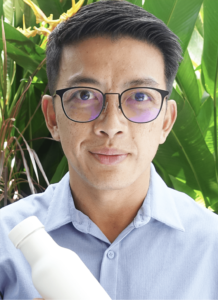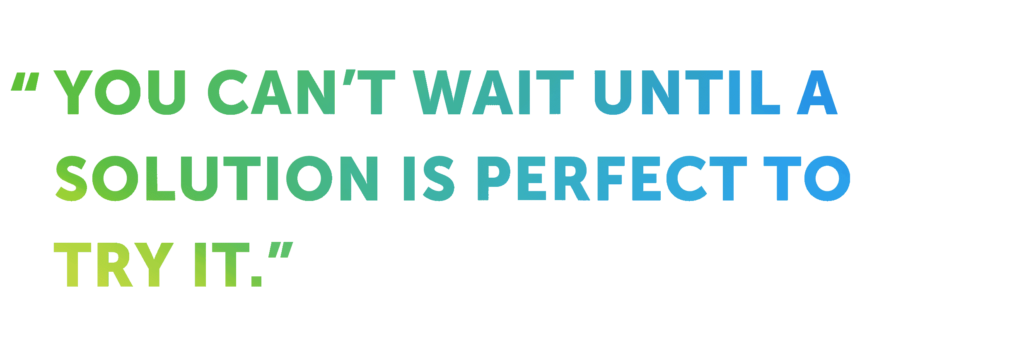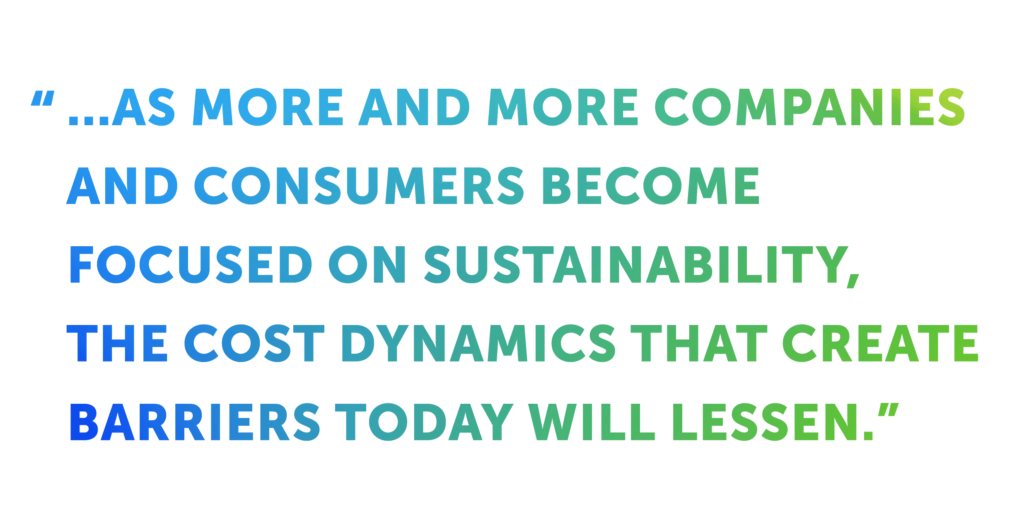VOICES & VIEWS: AN INTERVIEW WITH RYPAX CEO, ALVIN LIM
WITH 3D COLOR & RYPAX
3D Color is excited to announce our partnership with RyPax, the global leader in scaled sustainable packaging solutions. Operating four full-scale production facilities and one cutting-edge R&D center, RyPax has proven the viability of renewably sourced molded fiber as a versatile, practical alternative to plastic; a tremendous step forward toward a greener future for the packaging industry overall.
We sat down with RyPax founder and CEO Alvin Lim to discuss his vision for a circular packaging economy, and how the CPG industry can help speed the transition.
3D Color: What innovations in sustainable packaging design are most exciting to you right now? How about innovations specific to primary packaging?
Alvin Lim: First I want to talk about the reason an innovation excites me. I’m always focused on scalability as the key to impact. So inspiration is great, but the important question is, can that inspiration lead to mass production? Ideas can make you feel all warm and fuzzy inside, but if they can’t be scaled, they can’t make the impact we need to change the industry.
In terms of primary packaging, we’ve had a couple of huge breakthroughs in molded fiber in recent years. One is color capability. Brand owners used to think of sustainable materials as only available in white or natural kraft color, which was a big limitation. Today we can create these materials in any color.
Another big change is innovation in barrier coatings that open up molded fiber solutions for products like cosmetics or foods. Ten years ago we just didn’t have this.

3D Color: What can businesses do to speed up the transition to broader use of sustainable packaging?

Alvin Lim: The pace of change will get faster when corporations start looking at packaging differently — and some companies have already really embraced this. First, you need to look at packaging in terms of total cost of ownership, thinking about the manufacturer as the “owner” of the entire lifecycle of the product. Only then are companies motivated to design something that can be recycled properly. Second, the whole organization has to be geared toward the same goal; it can’t just be a sideline priority. Third, you must be ready to accept some imperfection. Maybe in your first iteration you’ll reduce the amount of plastic by 15%, then you’ll reduce it further. Change is iterative and progressive. You can’t wait until a solution is perfect to try it.
3D Color: How can CPG companies encourage consumers to embrace sustainable packaging and support the behavioral changes needed to reduce waste?
Alvin Lim: Education plays a big part, and companies have a responsibility there. But they can’t do it by themselves. It has to be an equal system whereby the CPG companies do their part to educate consumers, consumers do their part to recycle properly, and governments also do their part, because the system can’t work without the recycling capabilities.
Bigger countries like the US are in a unique position to lead because of the size of their economies, and the fact that they already have recycling infrastructure. Coming back to the idea of scale, we have to look to the large countries to drive meaningful impact.
3D Color: Too often companies think of sustainable packaging in terms of compromises like higher up-front cost or restrictions in creativity. What is your response to that?
Alvin Lim: Cost is always the easiest excuse, but that changes when you look at the full product lifecycle. It’s a mistake to think about sustainable packaging only in terms of unit cost, or to stay focused on fixed costs like preserving the value of existing packaging lines. That is a short-term view, and as consumers become more and more interested in sustainability and vote with their dollars, that kind of thinking will hold companies back.
When brands say “sustainable materials limit my ability to create really unique packaging,” that’s also an easy out. What’s the definition of “really unique”? We need to flip that thinking around and realize that when we make something that’s never been done before, it can be the most creative, most exciting package consumers have ever seen.
3D Color: What’s your advice to brands who don’t yet have a robust sustainability transition plan in place?
Alvin Lim: It all starts with high-skilled prototyping. When brands work with a partner like 3DColor who understands what it takes to get from prototype to scaled production, they get access to all the things that are required to transform their packaging approach: education, design expertise, and connections to mass production facilities around the world.
That connection between brand design and scaled production is really at the heart of our partnership with 3DColor. We have the source materials and facilities to manufacture at scale, but brand owners don’t necessarily understand these capabilities, or how they can work for their specific business needs. 3DColor brings complementary skills in prototyping and design, and trusted relationships with some of the biggest CPG brands. Together, we can deliver everything a company needs to make the transition to mass-produced sustainable packaging.
3D Color: Will the transition to sustainable packaging ever be complete?
Alvin Lim: I guess you could describe my outlook as “cautious optimism.” For today, certain applications that we are very reliant on will have to remain in plastic. But universities and companies like 3D Color and RyPax are working on these challenges and new solutions will eventually emerge.
I know that my company — or any company — can’t do this alone. Shared knowledge is essential – and as more and more companies and consumers become focused on sustainability, the cost dynamics that create barriers today will lessen.

We also realized we needed additional expertise, which led us to 3D Color. When we formed our partnership with 3D Color, I was so excited I got on a plane and flew to the United States to sign our contract in person, even though we were in the midst of one of the worst phases of COVID. We share the same values, and the same need to make a change in the world. When I think about the power of our combined expertise, and the work of other organizations who share our sense of urgency, I feel
hope.
Source: 3D Color
15 March 2022











